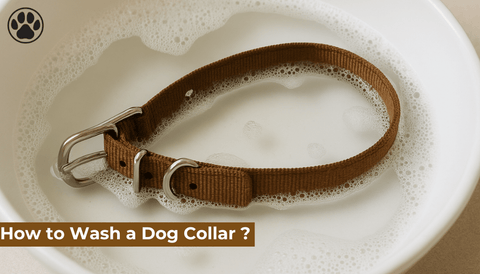
Can Dogs Eat Shrimp ?
of reading - words
Shrimp is a popular seafood enjoyed around the world for its delicious taste and nutritional benefits. But if you’re a dog owner, you may wonder: can dogs eat shrimp safely? While shrimp is not toxic to dogs, there are essential factors to consider before sharing this treat with your furry companion. In this article, we’ll explore the benefits, risks, and best practices for feeding shrimp to dogs, as well as answer common questions pet owners have on the topic.
Is Shrimp Safe for Dogs to Eat?
Yes, shrimp is generally safe for dogs to eat when prepared properly and given in moderation. However, it’s crucial to ensure that the shrimp is fully cooked, plain, and free from harmful additives such as salt, butter, garlic, or spices. Raw shrimp or shrimp that is improperly prepared can pose health risks for dogs.
As with any new food, it’s a good idea to introduce shrimp gradually to monitor for any adverse reactions. If your dog has a history of food allergies or sensitivities, consult your veterinarian before offering shrimp as a treat.
Nutritional Benefits of Shrimp for Dogs
Shrimp is not only a tasty treat but also a nutrient-dense food that can provide several health benefits for dogs:
- Protein: Shrimp is an excellent source of high-quality protein, which supports muscle growth and repair.
- Omega-3 Fatty Acids: These healthy fats promote a shiny coat, reduce inflammation, and support brain health.
- Vitamin B12: Helps maintain nerve function and supports healthy digestion.
- Phosphorus: Essential for strong bones and teeth.
- Antioxidants: Shrimp contains astaxanthin, a powerful antioxidant that can help fight inflammation and improve overall health.
These nutrients make shrimp a valuable addition to your dog’s diet, but only in small amounts and as an occasional treat.
Potential Risks of Feeding Shrimp to Dogs
While shrimp can be beneficial, there are also risks to consider:
- Choking Hazard: Shrimp shells and tails can be hard and pose a choking risk, especially for small dogs. Always remove shells, tails, and veins before feeding shrimp to your dog.
- Allergic Reactions: Some dogs may be allergic to shellfish. Signs of an allergic reaction include itching, swelling, vomiting, or diarrhea. If you notice these symptoms, stop feeding shrimp and contact your veterinarian.
- High Cholesterol: Shrimp contains relatively high cholesterol, which may not be suitable for dogs with existing health conditions such as pancreatitis or obesity.
- Bacterial Contamination: Raw or undercooked shrimp can contain harmful bacteria such as Salmonella or Vibrio, which can lead to foodborne illness in dogs. Always ensure the shrimp is fully cooked before offering it to your pet.
How to Safely Prepare Shrimp for Your Dog
To minimize risks and maximize benefits, it’s essential to prepare shrimp properly for your dog. Follow these steps:
- Choose Fresh or Frozen Shrimp: Ensure the shrimp is fresh, properly cleaned, and free from preservatives.
- Cook Thoroughly: Steam or boil the shrimp without any added salt, butter, or spices. Cooking kills harmful bacteria and makes the shrimp safe to eat.
- Remove Shells, Tails, and Veins: These parts are difficult to digest and can cause choking or blockages. Always serve only the cooked shrimp meat.
- Cut into Small Pieces: For easier chewing and digestion, cut the shrimp into bite-sized pieces appropriate for your dog’s size.
- Serve in Moderation: Shrimp should only be an occasional treat and not a regular part of your dog’s diet.
How Much Shrimp Can Dogs Eat?
The amount of shrimp a dog can safely eat depends on its size, age, and overall health. As a general guideline:
- Small Dogs: One to two small pieces of shrimp occasionally.
- Medium Dogs: Three to four pieces of shrimp occasionally.
- Large Dogs: Up to five or six pieces of shrimp occasionally.
Shrimp should make up no more than 10% of your dog’s daily calorie intake. Overfeeding shrimp or any treat can lead to an unbalanced diet and potential health issues.
Signs of Shrimp Allergies or Intolerance in Dogs
It’s important to monitor your dog for any signs of allergies or intolerance when introducing shrimp. Symptoms may include:
- Itching or skin redness
- Swelling, especially around the face or paws
- Vomiting or diarrhea
- Difficulty breathing (in severe cases)
If your dog shows any of these symptoms, discontinue feeding shrimp and contact your veterinarian immediately.
Alternatives to Shrimp for Dogs
If shrimp isn’t suitable for your dog, there are other safe and healthy seafood options you can consider:
- Salmon: Rich in omega-3 fatty acids, but should be cooked and free of bones.
- Tuna: High in protein, but should only be given in small amounts due to mercury content.
- White Fish: Low in fat and easy to digest, making it an excellent choice for dogs with sensitive stomachs.
These options, when prepared properly, can provide similar nutritional benefits as shrimp without the associated risks.
Creative Ways to Incorporate Shrimp into Your Dog’s Diet
Here are some fun and safe ways to include shrimp in your dog’s diet:
- Shrimp Toppers: Chop cooked shrimp into small pieces and sprinkle it over your dog’s regular food for added flavor and nutrition.
- Frozen Shrimp Bites: Mix cooked shrimp with plain, unsweetened yogurt and freeze it in small molds for a refreshing summer treat.
- Shrimp and Veggie Mix: Combine cooked shrimp with dog-friendly vegetables like carrots or green beans for a balanced snack.
Always ensure the shrimp is plain and free from any seasonings or additives when using these ideas.
Frequently Asked Questions
1. Can dogs eat raw shrimp?
No, dogs should not eat raw shrimp. Raw shrimp can contain harmful bacteria, such as Salmonella or Vibrio, that can cause foodborne illnesses in dogs. Always cook shrimp thoroughly before feeding it to your pet.
2. Are shrimp tails safe for dogs?
No, shrimp tails are not safe for dogs. They can be a choking hazard and are difficult to digest, potentially causing blockages in the digestive tract. Always remove the tails before feeding shrimp to your dog.
3. Can puppies eat shrimp?
Yes, but in very small amounts and only if the shrimp is fully cooked, plain, and free from shells. Puppies have sensitive stomachs, so it’s best to consult your veterinarian before introducing shrimp to their diet.
4. How often can dogs eat shrimp?
Dogs can eat shrimp occasionally as a treat, but not regularly. It should make up no more than 10% of your dog’s daily calorie intake to avoid unbalancing their diet.
5. What should I do if my dog has an allergic reaction to shrimp?
If your dog shows signs of an allergic reaction, such as itching, swelling, vomiting, or difficulty breathing, stop feeding shrimp immediately and contact your veterinarian for advice.
Conclusion
Shrimp can be a healthy and tasty treat for dogs when prepared and served correctly. Rich in protein, vitamins, and omega-3 fatty acids, shrimp offers nutritional benefits that can support your dog’s overall health. However, it’s essential to serve shrimp in moderation, ensure it’s fully cooked, and remove any shells or tails to prevent potential risks. By following these guidelines, you can safely share this delicious seafood treat with your furry companion.




